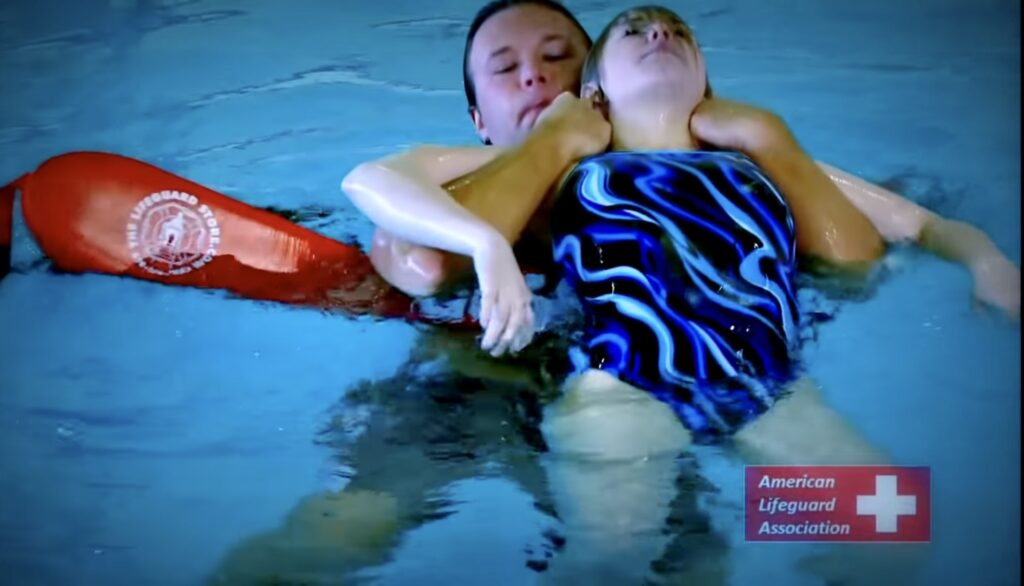What Should You Expect from a Comprehensive Lifeguard Training Program?

As one of the leading organizations for aquatic safety, the American Lifeguard Association (ALA) has established industry-leading standards for lifeguard certification training programs. A comprehensive program will provide future lifeguards with the critical knowledge, skills, and abilities needed to prevent and respond to emergencies in aquatic facilities. This article will outline the key elements to expect from an ALA-approved lifeguard training program.
Lifeguard Training Fundamentals
All ALA training programs begin by establishing a strong foundation in lifeguarding fundamentals. Expect introductory courses to cover topics like roles and responsibilities of a lifeguard, injury prevention strategies, basic water safety, and legal considerations. Trainees will learn about their critical duty to act responsibly and within the scope of their training. Proper scanning techniques, surveillance zones, and emergency action plans are also covered.
Professionalism and Decision-Making
Legal liabilities, professional conduct policies, and responsible decision-making are important discussion points in ALA lifeguard training. Interacting professionally with staff, patrons, and emergency responders is emphasized. Scenarios teach trainees to follow policies and procedures, properly document incidents, and learn from experiences to improve water safety practices. The ability to remain calm under stress and make competent judgment calls is developed.
Swimming Skills Evaluation
Proficiency in water safety and rescue skills is essential for any lifeguard. ALA programs require trainees to pass a rigorous swimming, floating, and treading water skills pre-test. This ensures they have the fitness and technical swimming abilities needed to perform in-water rescues if necessary. Skills evaluations may include swimming 500 yards continuously, treading water for two minutes, and performing front and back crawl strokes with proper form.
CPR and First Aid Certification
Medical training is a core component of lifeguarding, and ALA programs dedicate substantial time to CPR, AED, first aid, and breathing emergencies. Trainees complete both knowledge and skills assessments to earn professional rescuer certifications from a nationally-recognized provider like the American Red Cross. This equips future lifeguards with the skills to assess injuries, control bleeding, handle cardiac and respiratory emergencies, and perform one-person, two-person, and infant CPR.
In-Water Rescue Techniques
When all else fails, a lifeguard must be prepared to execute in-water rescues efficiently and safely. Extensive practice is dedicated in ALA programs to mastering single-person, two-person, and object rescue techniques. Trainees practiceentries with full equipment, reaching assists, throwing assists, wading and swimming rescues, spinal injury management, backboarding, and escapes from a variety of in-water hazards. Competency must be proven through skills testing of each rescue.
Safety Training Equipment
ALA training programs utilize the latest in safety devices and prevention equipment. Trainees will learn to use tools like rescue tubes, spineboards, rescue masks, rescue whistles, and AED units properly. This provides a critical understanding of how to respond decisively and intervene appropriately using industry-standard lifeguarding gear at any aquatic facility.
Certification and Job Opportunities
Upon successful completion of all evaluations and assessments over skills and knowledge, ALA programs award professional lifeguard certifications. Examples include Lifeguarding, Waterfront, Shallow Water, and Pool and Waterpark certifications. With an ALA certification in hand, graduates gain access to exciting career opportunities at aquatic facilities, waterparks, beaches, camps, and more. Certificate renewals are required periodically to retain up-to-date lifeguarding skills.
Rigorous Physical Training
In addition to swimming skills evaluations, ALA programs include rigorous physical fitness preparation. Trainees build their stamina, strength, and flexibility through daily conditioning focused on exercises like plyometrics, circuit training, and high-intensity interval training. This ensures lifeguards have the core physical abilities needed to perform their duties for extended periods without fatigue. Those unable to meet physical standards will not pass the program.
Scanning Supervision Training
Effective scanning is critical for lifeguard surveillance. ALA programs utilize special scanning technques like rotational, zone, and variable scanning to mitigate lax posture or lapses in attentiveness. Trainees practice scanning various facility configurations and patron loads while physically remaining on station. Supervision training reinforces professional visual prowess needed to maintain constant 3D awareness of patrons and respond to any signs of distress within seconds.
Lifelike Practice Scenarios
Through realistic emergency simulations, ALA programs prepare trainees for high-risk situations before they occur. Unexpected multi-phase scenarios are conducted involving mock medical emergencies, injuries, missing persons, weather hazards, and facility malfunctions. Trainees must utilize all skills and think critically to efficiently navigate scenarios under stress. Debrief sessions identify strengths or areas for improvement and reinforce emergency action plans. The situational judgment ensures readiness for anything that could arise on the job.
Waterpark and Aquatic Attraction Training
Dedicated sessions provide specialized training for waterpark duties involving attractions presenting unique safety needs. Trainees practice patron loading/unloading procedures along with in-park supervision of features like wavepools, slides, play structures, and leisure rivers. They learn hazard recognition and how to coordinate with co-workers during high-traffic periods, seasonal events, or when attractions suddenly close. This equips them to work safely at today’s state-of-the-art waterparks and aquatic venues.
Continuing Education Certification
To retain up-to-date skills and uphold the highest standards, ALA emphasizes ongoing recertification and training opportunities. Annual continuing education allows lifeguards to earn certifications in advanced topics like Waterpark Management, Bay and Ocean Lifeguarding, and Aquatic Facility Operations. Some take supplementary courses to become certified instructors so they can give back to the industry by conducting ALA classes themselves. By continually elevating their expertise, lifeguards ensure long-term careers and leadership roles.
In The End
An ALA lifeguard training program delivers a gold standard, comprehensive curriculum that allows trainees to gain the critical competencies to protect aquatic safety. Through realistic instruction on the fundamentals, medical skills, in-water rescues, operational equipment, and professionalism, graduates receive a well-rounded education to become assured, prepared lifeguards committed to assisting others in need. With an emphasis on continuous improvement, these programs set the benchmark for lifeguard certifications nationwide.

 Smile Brighter: Meet Canberra’s Top Dental Hygienists
Smile Brighter: Meet Canberra’s Top Dental Hygienists  Transform Your Comfort: Discover the Benefits of Cushions Lab Seat Cushions and Pillows
Transform Your Comfort: Discover the Benefits of Cushions Lab Seat Cushions and Pillows  Enhance Your Mental Clarity with Modafresh 200
Enhance Your Mental Clarity with Modafresh 200  List of Top 10 Neurologists in India 2024
List of Top 10 Neurologists in India 2024  Body Care Products Manufacturers: Providing Quality Products for Your Skincare Needs
Body Care Products Manufacturers: Providing Quality Products for Your Skincare Needs  The Journey to the Best Microblading in Dubai: A Client’s Perspective
The Journey to the Best Microblading in Dubai: A Client’s Perspective  Exploring London’s Best Butcher Shops
Exploring London’s Best Butcher Shops  Enhance Your Shop Appeal with Sydney’s Best Carpentry Services
Enhance Your Shop Appeal with Sydney’s Best Carpentry Services  A Detailed Look at the Features of the LEGO Technic Mars Crew Exploration Rover
A Detailed Look at the Features of the LEGO Technic Mars Crew Exploration Rover